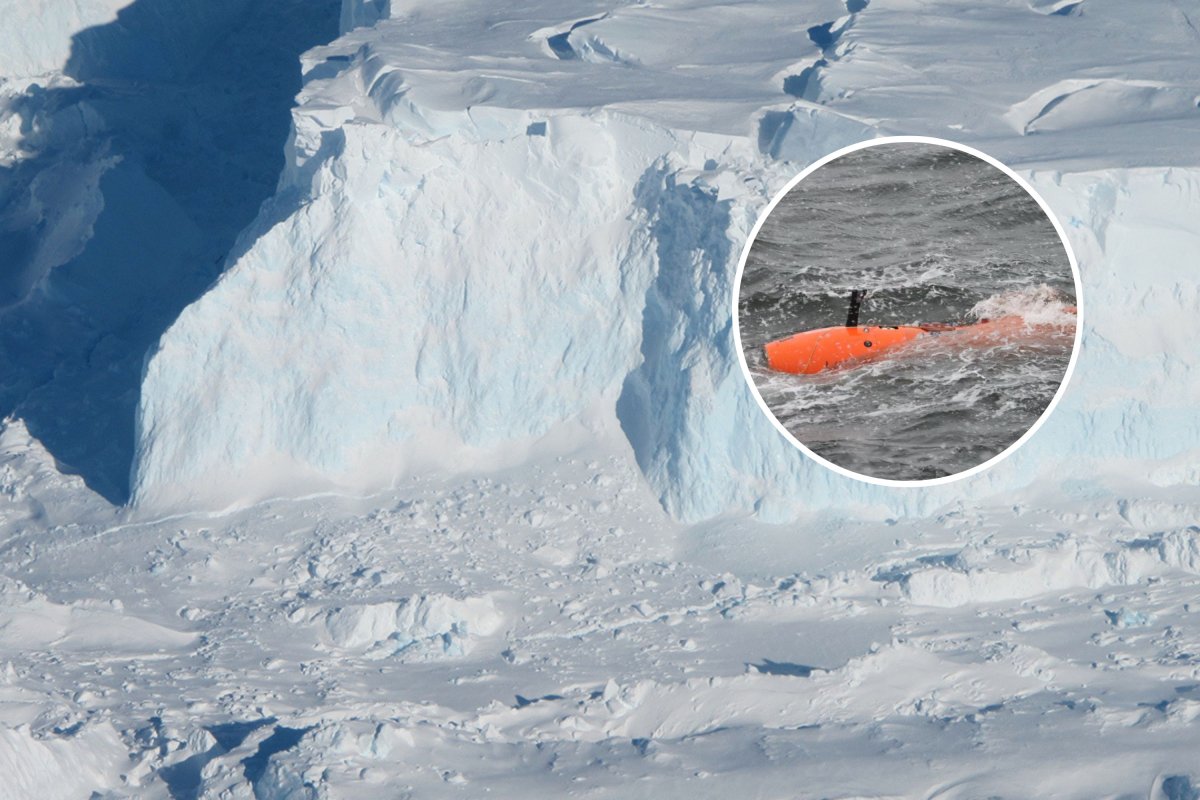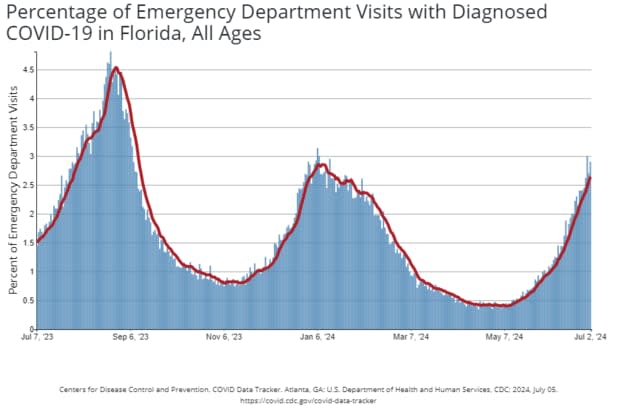
An exploration vehicle has vanished while examining the “Doomsday Glacier” in Antarctica. The missing vehicle, named Ran, which is an unmanned underwater vehicle (AUV) that measures and documents the water conditions under glacial ice, was on a research mission to study the Thwaites Glacier when it went missing. This AUV is one of only three of its kind globally and has advanced technology and sensors that enable it to carry out extensive research under glacial ice. The estimated cost of Ran is about $3.6 million.
NASA picture of the Thwaites Glacier (main) and the lost Ran AUV (inset). The underwater research vehicle has gone missing while exploring underneath the Thwaites or Doomsday Glacier.
NASA picture of the Thwaites Glacier (main) and the lost Ran AUV (inset). The underwater research vehicle has gone missing while exploring underneath the Thwaites or Doomsday Glacier.
NASA/James Yungel / Anna Wåhlin
“We used Ran to explore the area under the ice at Thwaites Glacier for the second time. We were the first researchers to access Thwaites in 2019, and during this recent expedition, we revisited the same area. While satellite data shows melting and movement in the ice, Ran provides close-up images of the underside of the ice and information about the specific mechanisms causing the melting,” stated Anna Wåhlin, a professor of oceanography at the University of Gothenburg and a member of the research team. The Thwaites Glacier, a part of the West Antarctic Ice Sheet (WAIS), is the widest glacier on Earth, with a surface area larger than the state of Florida. It has earned the moniker “Doomsday Glacier” due to its potential impact on global sea levels if it were to completely melt. It is estimated that a collapse of the Thwaites Glacier could lead to a global sea level rise of over 2 feet, affecting major cities like Shanghai, New York, Miami, Tokyo, and Mumbai, as well as coastal regions and low-lying island nations.
There are concerns that the collapse of Thwaites could trigger other glaciers in the area, leading to a significant rise in global sea levels. Currently, Thwaites contributes to about 4 percent of global sea level rise, losing approximately 50 billion tons of ice annually and a total of about 1000 billion tons since 2000. Ran, the missing AUV, conducts dives under glaciers like Thwaites, which can be between 650 and 1,640 feet thick. Normally, Ran operates independently, with its route preprogrammed and navigates its way back to the ocean surface. Despite previous successful dives, Ran failed to resurface on this occasion. Search efforts using acoustic equipment, helicopters, and drones were unsuccessful, and Ran remains lost beneath the ice.
“At this point, Ran’s batteries are dead, and we have no information about its whereabouts. We suspect it encountered unexpected issues under the ice, preventing it from surfacing,” said Wåhlin. The team holds little hope of finding Ran but is appreciative of the data it has collected so far and the support received. They view Ran’s loss as an unfortunate end but are considering plans to replace it for future research.

“The data provided by Ran is invaluable for international research. Although it is a significant loss, we can consider it a better end than having the AUV sitting idle. We’ve had Ran for five years and it has contributed to about ten expeditions, training, development work, and tests. Our next goal is to replace Ran,” Wåhlin concluded.
If you have a science-related tip or questions about glaciers, please contact science@newsweek.com.
Uncommon KnowledgeNewsweek is committed to challenging conventional wisdom and finding connections in the search for common ground.Newsweek is committed to challenging conventional wisdom and finding connections in the search for common ground.













